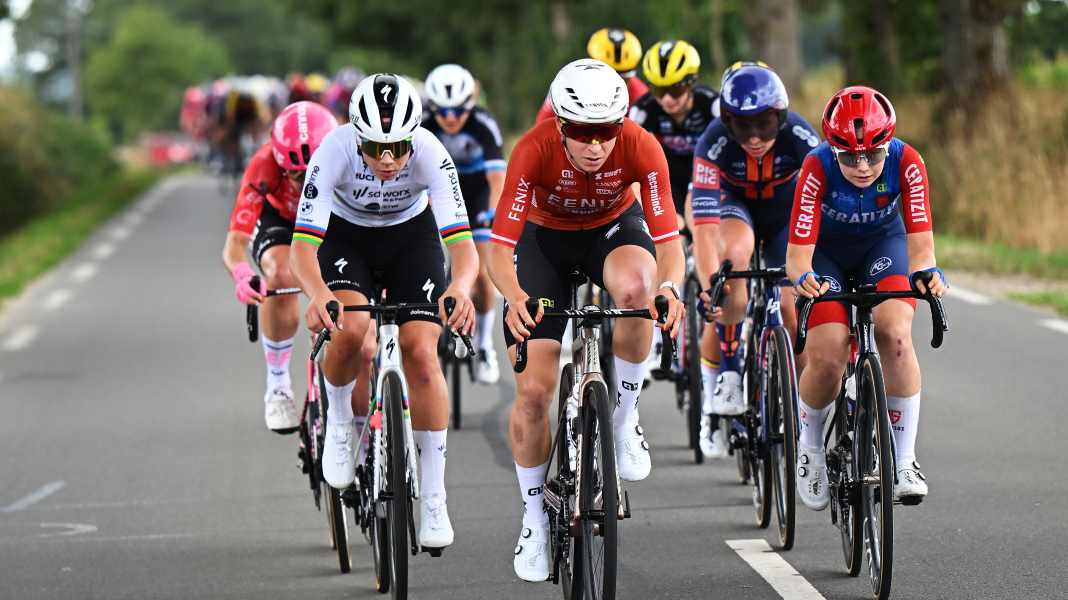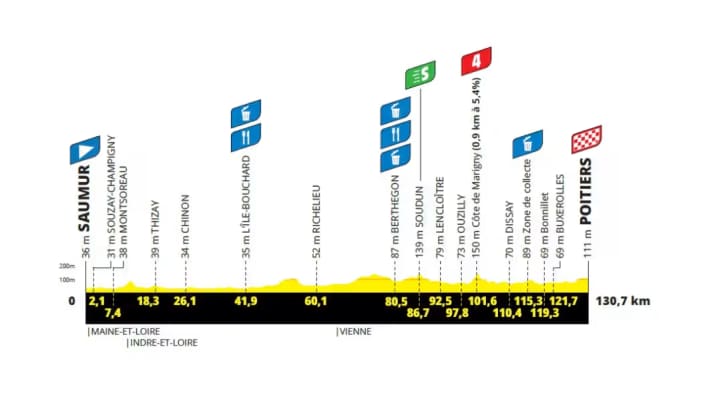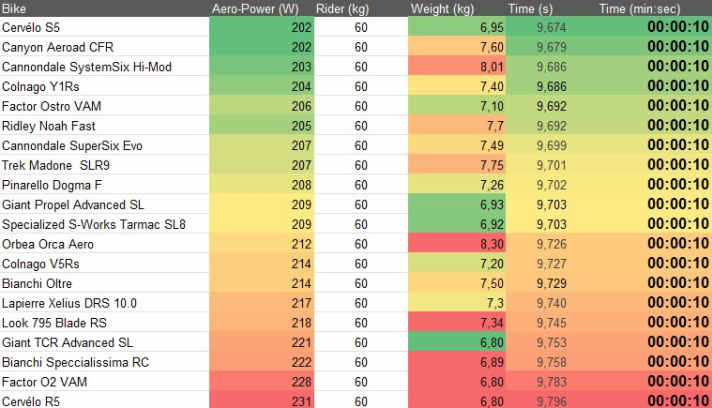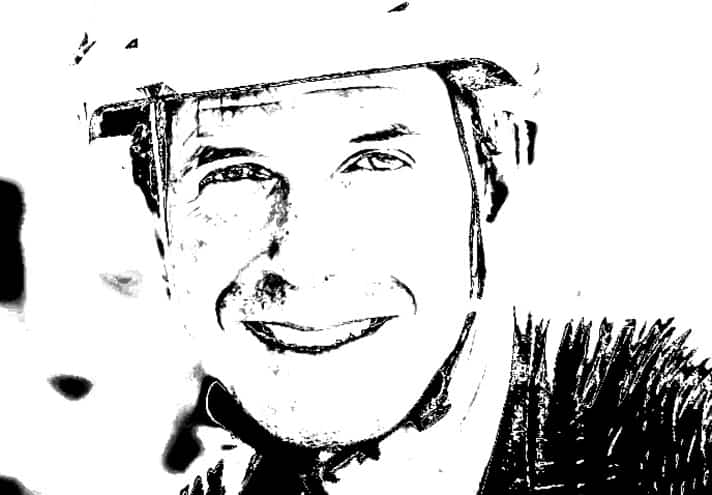
Tour de France Femmes 2025 - Stage 4: Saumur - Poitiers | 130,7 Kilometers

The fourth stage is another sprint stage. With only 780 meters of elevation gain in total, the route is as flat as a pancake, and the few small hills on the profile will be flattened by the peloton.
The approach to the finish in Poitiers is also flat and very straightforward. The last kilometer is straight as an arrow on Avenue John Kennedy, with only six meters of elevation gain between the 1000-meter-mark and the finish line.
The tactical scenario is therefore clear: the sprinters' teams will control the race. Only the wind could throw a spanner in the works. Riding in crosswinds always carries the risk of the field breaking up into several groups.
What does this mean from a technical point of view? The riders will rely on aero equipment. Without exception, everyone can benefit from it – whether at the front of the field doing the chasing work, when starting the sprint or during the sprint itself, the aero screw is the one with the greatest effect.
If crosswinds are expected, there are tricks to get even more out of it. Special aero front tires, such as the Conti Aero 111, improve aerodynamics, especially in crosswinds. Two effects can be observed: the front wheel wobbles less in gusty conditions when these tires are fitted, which improves handling, and aerodynamic resistance is also lower. Win-win!
In the wind tunnel, we were able to test the behavior of the tire at different speeds and in combination with different rims. Surprisingly, the tire always performed well. The special tread pattern, which consists of rectangular indentations, stimulates a so-called turbulent boundary layer, which means that the airflow can follow the contour of the rim profile for longer. This reduces the pressure resistance on the wheel, and although an increasing but continuous torque can be felt in the steering, the front wheel then behaves like a sail and can even generate propulsion from the airflow. If, on the other hand, the airflow stalls at higher yaw angles, the steering torque fluctuates greatly, which is harder to control.
In our simulation of the day, we ride a slightly shorter sprint than the day before from a higher starting speed. Does that affect the result?
The number of the day: five thousandths of a second
The advantage gained through technology is becoming smaller, but it is still there. The Cervélo S5 beats the Canyon Aeroad by five thousandths of a second in the high-speed sprint. From a technical point of view, Marianne Vos once again has the best cards for the final sprint.
The (almost) complete field at a glance

The table shows the ranking after 180 meters of virtual sprint. The bikes at the top are united by their very good aero performance.
Our expert

Robert Kühnen studied mechanical engineering, writes for TOUR about technology and training topics and develops testing methods. Robert has been refining the simulation calculations for years, they are also used by professional teams.
